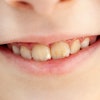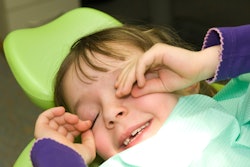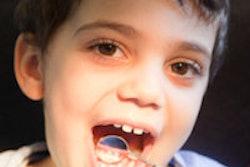
In the past 15 months, four pediatric patients have died in the U.S. after undergoing sedation prior to dental treatment -- a tragic reminder of the need to ensure proper sedation training and emergency preparedness.
On May 11, a 6-year-old boy died from cardiac arrest following a dental procedure at Virginia Commonwealth University (VCU) clinic, according to a story in the Richmond Times-Dispatch.
Jacobi Hill, who had undergone sedation prior to having crowns put on several of his teeth, went into cardiac arrest shortly after the procedure was complete and the breathing tube removed, his mother, Crystal Lewis, told the Times-Dispatch. She said the boy had asthma but no other known health problems and that a pediatrician had examined him the day before and said he was fine to undergo the procedure.
According to a statement issued by VCU and obtained by Richmond, VA, television station WTVR:
Virginia Commonwealth University wants to understand what happened in connection with the tragic event involving a pediatric patient. Our internal investigation continues, and we are awaiting the results of the autopsy conducted by the Virginia Office of the Medical Examiner. We have been in contact with the patient's family, and we will continue to be available to them. VCU complies with requirements governing the administration of general anesthesia during dental procedures, and professional emergency care is immediately available in our dental clinics and facilities.
|
AAPD policy statement on oral sedation Following the 2006 death of a Chicago 5-year-old, Diamond Brownridge, the American Association of Pediatric Dentistry updated its sedation guidelines to require that the person performing sedation be "qualified and appropriately trained" and have the necessary equipment and backup to use in case of an emergency. The current AAPD policy statement reads: "The AAPD endorses the in-office use of deep sedation or general anesthesia on select pediatric dental patients administered either by a trained, credentialed, and licensed pediatric dentist, dental or medical anesthesiologist, nurse anesthetist, or anesthesia assistant in an appropriately-equipped and staffed facility." |
The boy's mother said her oldest son had had the same procedure and did not have any problems, so she thought the results would be the same with Jacobi, according to WTVR.
VCU officials did not return calls for comment.
John Rutkauskas, D.D.S., CEO of the American Academy of Pediatric Dentistry (AAPD), told DrBicuspid.com, "We will be following this case very closely."
Different sedatives
Less than three weeks before Hill's death, a 5-year-old Florida boy died while under sedation at a Gainesville dentist's office. On April 22, Dylan Shane Stewart was given chloral hydrate during an appointment with Ronnie Grundset, D.D.S., to have four fillings and eight crowns placed, according to a story in the Gainesville Sun.
The boy's siblings, a boy and a girl, had been sedated with chloral hydrate -- a commonly used sedation drug in pediatric dentistry -- during prior visits to Dr. Grundset and experienced no adverse side effects, the story said.
The Alachua County, FL, coroner is awaiting the results of toxicology tests to determine the boy's cause of death. Dr. Grundset did not return calls for comment.
In December, 22-month-old Maddoux Cordova died after his teeth were capped at the Village Specialty Surgical Center in San Antonio, according to a story in the San Antonio Express-News. His parents are suing the boy's anesthesiologist, Brian Seastrunk, M.D., and the surgical center, claiming they administered too much morphine in doses too closely together, the story said.
The boy lost oxygen to his brain shortly after the procedure and was brain-dead for two weeks before his mother decided to take him off life support, the story said.
Calls to the Bexar County medical examiner, the surgical center, and the attorney representing the boy's family were not returned.
And in February 2009, 9-year-old Cory Moore Jr. died after being sedated for a procedure by Tampa, FL, dentist R. Andrew Powless, D.M.D. Last month his parents filed a lawsuit against Dr. Powless, claiming staff should not have sedated him because he had eaten prior to the dental procedure. The Hillsborough County medical examiner said the child died of aspiration of gastric contents during administration of anesthesia for an extraction. He had been given diazepam and ketamine.
A growing trend?
Do these four cases represent a trend? To a certain extent, according to Indru Punwani, D.D.S., M.S.D., a spokesperson for the AAPD and head of the pediatric dentistry department at the University of Illinois at Chicago. Sedation is becoming more common in pediatric dental procedures because so many children are coming into dentist offices at younger ages with caries, and they sometimes need extensive work, he told DrBicuspid.com.
"The disease is appearing earlier and earlier, especially in underserved communities and immigrant populations, and sedation is often needed, particularly with very young children who need a lot of work," he said.
But pediatric sedation is safe if done correctly, he added, noting that it is routinely used without problems. "Sedation is used thousands of times every day in medical and dental procedures," he said. "It's an extremely common and safe procedure."
A child's needs and the parents' preference must be taken into consideration, Dr. Punwani noted. Nitrous oxide is one of the first tools dentists use with children who can understand instructions. But with very young children, sedation or general anesthesia is often necessary, he said.
"I've been practicing at the University of Illinois for 37 years, and we do several sedations a day without concerns," he noted. "It's a safe agent. If you follow the protocols and do things correctly, it's very rare to have problems."
Dr. Punwani cited several factors to be considered before pediatric sedation:
- Careful case/patient selection -- only healthy children should be sedated, and dentists should check to see if the child has any pre-existing conditions, such as asthma, that could cause problems
- Proper training, including support staff
- Preoperative assessment
- Good patient monitoring (blood pressure, oximetry, heart and respiratory rates)
- Proper backup system in case of emergencies (call 911, emergency medical plans)
"Airway management for children is the primary thing, and breathing problems can lead to cardiac arrest" he said, noting that patients with large tonsils can be problematic. Sometimes the tongue can fall back, blocking a patient's airway, and the jaw needs to be moved forward.
Dr. Punwani pointed out that sedation guidelines are the same for dentists, physicians, and anesthesiologists. Training requirements for sedation vary by state, but all dental schools require one month of training for accreditation, Dr. Punwani said.
"Dentists should also carefully identify the drug protocols that they're comfortable and experienced with," he advised.
|
Most commonly used sedation agents in pediatric dentistry
|
Be prepared
The statistics support Dr. Punwani's observations. Joel Weaver, D.D.S., Ph.D., emeritus professor at Ohio State University's College of Dentistry and a consultant on anesthesia issues for the ADA, estimates the risks of an adult or child dying during anesthesia are about 1 in 350,000 to 500,000. "It happens in very rare instances," Dr. Weaver told DrBicuspid.com.
Milton Houpt, D.D.S., Ph.D., professor and chairman of pediatric dentistry at the New Jersey Dental School, noted in a 2002 survey of 1,778 pediatric dentists that most practitioners use little, if any, sedation. But there has been an overall increased use of sedation by pediatric dentists since 1985, he pointed out, primarily due to an increase in the number of practitioners who use sedation at least once a day (American Academy of Pediatric Dentistry Journal, July-Aug, 2002, Vol. 24:4, pp. 289-294). Dr. Houpt is now completing a 25-year follow up on the survey, which will be available this summer.
Even so, being prepared for office medical emergencies is critical (Journal of the American Dental Association, May 2010, Vol. 141:1, pp. 8S-13S). John Roberson, D.M.D., co-founder of the Institute of Medical Emergency Preparedness, told DrBicuspid.com there are several common issues usually involved in emergencies resulting from dental procedures:
- Delay in calling 911
- Delays in responding to treatment of the emergency
- No emergency protocols in place
- Lack of proficient staff training for emergency situations
- Little or no documentation of event
Dr. Roberson said conducting regular mock drills and having an emergency drug kit and automated external defibrillators on hand are also important.
Most state dental boards require dentists who use sedation to have emergency procedures in place. In January, Illinois became the first state to pass a law requiring all dentists to have a medical emergency plan. "All staffers should have responsibilities and duties to deal with emergencies," Dr. Roberson said.
"Any time you put anybody to sleep, there's a theoretical risk. But if you make careful patient selection and follow guidelines and monitoring protocols, it's a very safe procedure," Dr. Punwani concluded.
Copyright © 2010 DrBicuspid.com



















